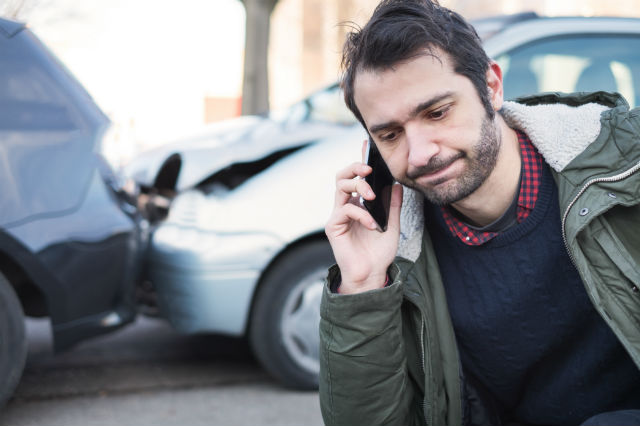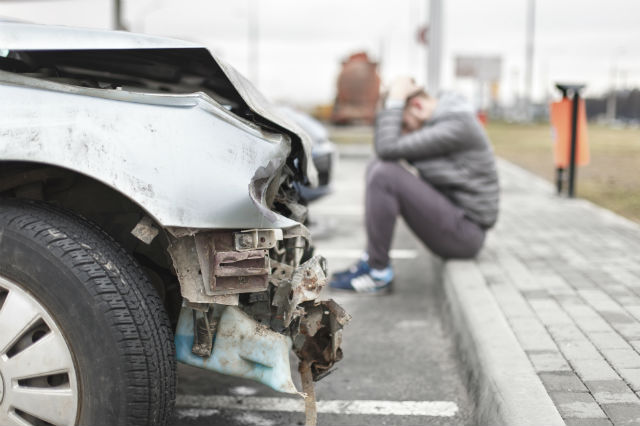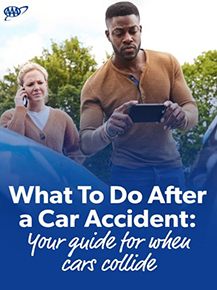You’ve been in a car crash. It wasn’t your fault. Your car is damaged, and you may need medical care. But, you’ve managed to come away in one piece. You feel grateful, until you find out the other driver has no insurance.
This is where uninsured motorist coverage comes in handy.
You’re probably asking, “What is uninsured motorist coverage?” Offered in addition to liability, collision or comprehensive coverage, uninsured motorist coverage offers you protection from an at-fault driver who has no automobile insurance coverage whatsoever.
Who drives without insurance?
In 2023, one in seven drivers were traveling on the road without any type of vehicle insurance, according to the Insurance Research Council (yikes.) If you’re hit by a driver with no insurance — or worse, you’re the victim of a hit-and-run crash — you get stuck with the bill for vehicle damage, medical expenses, lost time at work and a host of unexpected, accident-related expenses.
This can also happen when an at-fault driver is underinsured. Underinsured motorist coverage offers protection when an at-fault driver doesn’t have enough insurance. It is sometimes bundled with uninsured motorist coverage. This varies by state.
“An uninsured motorist is a driver that does not currently carry liability insurance coverage,” said Jodi DeSantis, managing director of insurance sales at AAA Northeast. “An underinsured motorist is a driver that does not carry enough liability insurance to cover the expenses after an accident.”
Some states require that all drivers purchase uninsured motorist insurance. These states include Connecticut, Massachusetts, Maine, Vermont, New York and Maryland. In other states, such as Delaware, it is automatically included in drivers’ insurance policies, and dropping it requires that drivers reject the coverage in writing.
Vehicle insurance requirements vary broadly from state to state. But, here’s some food for thought: The Insurance Research Council reports that rates of uninsured motorists range from 4.5% in Maine to as high as 26.7% in Florida.
Fortunately, uninsured/underinsured coverage typically costs less than 10% of your overall premium. Ask your insurance representative for a quote.

Two types of uninsured motorist coverage
There are two types of uninsured and underinsured insurance: bodily injury and property damage.
“Uninsured motorist bodily injury coverage protects you, your household members and passengers if you are injured by a driver without liability coverage,” DeSantis said. This type of insurance compensates you for out-of-pocket costs from medical bills, funerals and loss of income.
Uninsured motorist property damage coverage pays for damage to your vehicle if it is damaged by a driver without liability coverage. Underinsured motorist coverage also protects against bodily injury and property damage. “An underinsured driver may have liability coverage, but their limit may not be enough to cover expenses after an accident,” DeSantis said.
Should I purchase uninsured motorist property damage coverage?
In some states, uninsured property damage insurance can overlap with collision coverage, which pays for damage to your car from an impact with an object or another vehicle. “If another motorist damages your vehicle, then collision coverage will pay for the damage to your vehicle, minus your deductible, whether the other party is insured or not; however, you may benefit from a lower deductible under the uninsured property damage coverage if this has been purchased,” said DeSantis.
Typically, uninsured motorist bodily injury coverage does not come with a deductible. However, a deductible may accompany your uninsured motorist property damage coverage. This varies by state.
Uninsured bodily injury coverage
Personal injury protection, or PIP, covers medical expenses for you and your passengers, including medications, surgery and rehabilitation. It also pays for lost wages and funeral costs. Drivers are required to have PIP coverage in no-fault states such as Massachusetts, Pennsylvania, New Jersey and New York, where insurers cover certain accident costs, within limits, regardless of who is at fault. For this reason, PIP is often referred to as no-fault insurance.
Medical payments coverage, or MedPay, covers medical bills for you and your passengers. Like PIP, it covers medical expenses such as ambulance rides, surgery and medications, although it is typically less comprehensive than PIP. Regardless of who is at fault, MedPay works quickly to pay medical costs, and may even cover the cost of your health-insurance or PIP deductible. MedPay is optional in every state except Maine and New Hampshire, where it is required when drivers buy car insurance.
MedPay can be used to supplement your health insurance, which can sometimes leave you with costly gaps in coverage following an accident. It can also serve as added protection in the case you do not have PIP insurance.
Does PIP or MedPay eliminate the need for uninsured bodily injury coverage? Possibly. It depends on the level of coverage you have and what state you live in. Be sure to go over any questions you have with your insurer.
From auto to home and everything in between, the expert insurance agents at AAA can help. Learn your auto insurance options and get a quote.
This article has been updated and republished from a previous version.
2 Thoughts on “What Is Uninsured Motorist Coverage?”
Leave A Comment
Comments are subject to moderation and may or may not be published at the editor’s discretion. Only comments that are relevant to the article and add value to the Your AAA community will be considered. Comments may be edited for clarity and length.
















Hello
I would like more info on house and auto insurance. we are. AAA members
Hi Sheila, I’ve given your information to our insurance specialists and someone should be reaching out to you soon. If you’d like to set up an appointment with a AAA insurance agent via phone, branch or virtual, you can also find all the info you need here. Thank you!